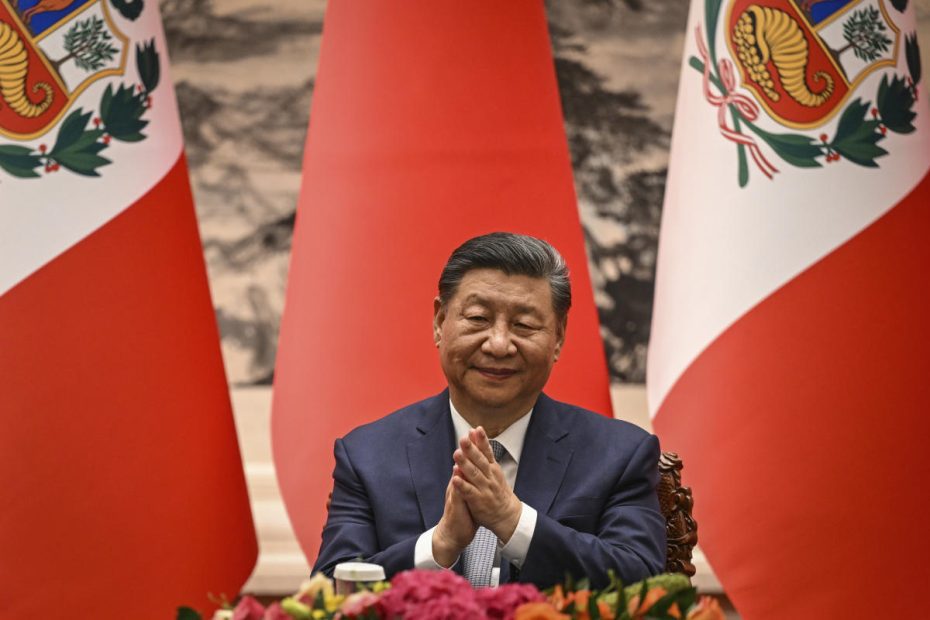CHANCAY, Peru (AP) — On the edge of Peru's coastal desert, a remote fishing village where a third of all residents have no running water is being transformed into a massive deep-water port to cash in on the inexorable rise of Chinese interest in South America , rich in resources.
The megaport of Chancay, a $1.3 billion project majority owned by Chinese shipping giant Cosco, is turning this outpost of bobbing fishing boats into a major hub of the global economy. Chinese President Xi Jinping will inaugurate the port on Thursday during the Asia-Pacific Economic Cooperation forum in Peru.
The development – which is expected to include 15 wharfs and a large industrial park with more than $3.5 billion of investment over the next decade – has drawn skepticism from impoverished villagers, who say it deprives them of fishing waters and does not provide any economic benefit to the local population.
“Our fishing spots no longer exist here. They destroyed them,” said 78-year-old fisherman Julius Caesar – “like the Emperor of Rome” – as he gestured to the harbor cranes. 'I don't blame the Chinese for trying to exploit this place for as much as possible. I blame our government for not protecting us.”
The Peruvian government hopes the port, 60 kilometers north of Lima, will become a strategic transshipment hub for the region, opening a new line connecting South America to Asia and boosting trans-Pacific trade for Peruvian blueberries, Brazilian soybeans and Chile's copper will accelerate. including exports. Officials cite the port's potential to generate millions of dollars in revenue and turn coastal cities into so-called special economic zones with tax breaks to lure investment.
“We Peruvians are primarily focused on the well-being of Peruvians,” Foreign Minister Elmer Schialer told The Associated Press.
But many of Chancay's 60,000 residents are not convinced. Fishermen returning to port with smaller catches complain that they have already lost.
Dredging of the harbor – which sucked sediment from the seabed to create a channel 17 meters deep – has destroyed fish breeding grounds, locals say.
“I've been in the water all day and I always have to travel further,” says Rafael Ávila, a 28-year-old fisherman with sand in his hair, who returns to shore empty-handed and exhausted.
“This used to be enough,” he said, pointing to his painted dinghy. “Now I need a bigger, more expensive boat to reach the fish.”
To make extra money, Ávila began offering occasional joyrides to visitors who wanted to take a selfie and glimpse the colossal Chinese ships.
With some of the world's largest container ships due to dock at the port of Chancay in January 2025, residents also fear the arrival of pollution and oil spills. In 2022, a failed tanker delivery at the nearby La Pampilla refinery spilled thousands of barrels of crude oil into Peru's famously biodiverse waters, killing countless fish and throwing legions of fishermen out of work.
Today, a look at the dying city center, with largely empty seafood restaurants, tells the story of diminished fish stocks and decimated tourism, even without the port being operational.
The harbor's breakwater changed currents and destroyed good surfing conditions, locals said, affecting everyone from ice cream sellers to truck drivers and restaurant owners. 'No to the mega harbour' has been spray-painted on a wall overlooking the waterfront.
“This harbor is a monster that came here to screw us,” said 40-year-old Rosa Collantes, as she cleaned and gutted slimy drumfish on the shore. “People come to the port and say, 'Wow, great!' but they don't see the reality.”
Port authorities say they are aware of the stark contrast between the sleek modern port and the surrounding village of Chancay, where many live on dirt roads lined with tattered shacks and littered with trash.
“You can't build a state-of-the-art port and have a city next to it that has no drinking water, no sewage, a collapsing hospital and no education centers,” said Mario de las Casas, manager of Cosco in Chancay. , adding that the company had already launched studies to determine how the port could help reduce inequality and boost local growth.
“The port should not be a blemish,” De las Casas said.

